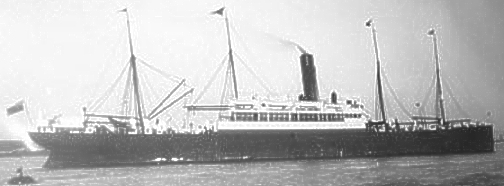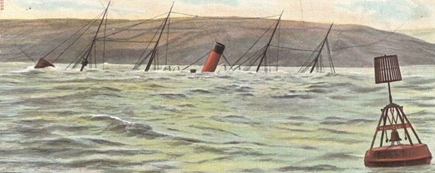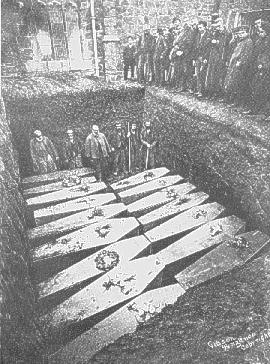
 |
||||||||||
| October 14th | SS Mohegan (Wreck) |
 |
 |
|||
The SS Mohegan was a steamship which was wrecked on the Manacles on her second commercial voyage with the loss of 106 of the 197 passengers and crew. Originally named ‘SS Cleopatra’ she completed her first commercial voyage from London to New York. Owned by the Atlantic Transport Line, she could carry 120 First Class passengers and had stalls for 700 cattle. On the maiden voyage, the officers and crew identified a number of serious faults including leaks and a malfunctioning water boiler system. Returning to London, at half speed, she was repaired and renamed ‘SS Mohegan’, starting on her second commercial voyage on October 13th, 1898 commanded by Captain Richard Griffith and carrying 97 crew, 57 passengers, hundreds of cattle cared for by 7 cattlemen and with other cargo of spirits & beer as well as antimony. The SS Mohegan sailed down the English Channel at maximum speed, hugging the coast, but took the wrong bearing. This was noticed by some of the crew when observing that the coast was too close and the Eddystone Lighthouse too far away. This meant that she was heading directly for the Manacles. Attempts to alert the crew were made by Coverack Coastguard but to no avail and she hit the rocks at full speed. |
||||
The ship had three lifeboats capable of carrying 59 people but, despite the best efforts of two lifeboats (one of which capsized), coastguard and local fishermen, the loss of life was enormous when she sank within twelve minutes. None of the officers appeared to survive, meaning that no cause for the incorrect navigation could be determined, but there were rumours that the Porthoustock lifeboat had saved an officer who ran away and was never seen again.
|
 |
This led to local legend that he was the captain but Captain Griffin's body was found in Caernarvon Bay (North Wales) three months later.. Some of the recovered bodies were identified and a number sent to London and more to New York for burial but most were buried in a mass grave in St. Keverne Churchyard whose Church has a stained glass window memorial given by the Atlantic Transport Line. |
||
|
||||